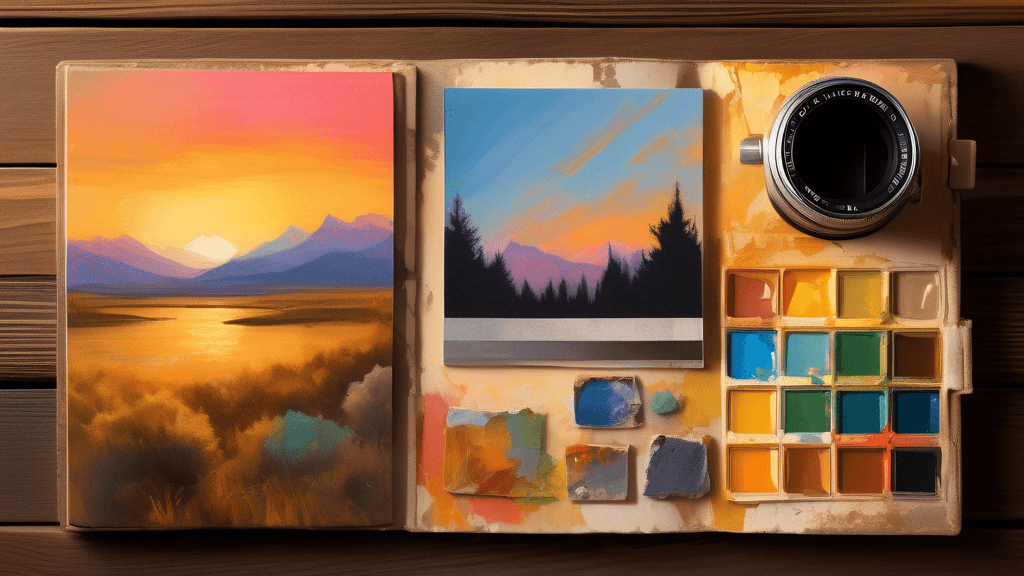
Mastering Composition in Landscape Photography
Share
Landscape photography is an art form that captures the breathtaking beauty of nature and presents it in a way that resonates emotionally with its viewers. Whether you’re a budding photographer or a seasoned professional, mastering the composition is crucial to enhancing the impact of your landscape images. But what makes a composition truly stand out?
Understanding the Basics of Composition
At its core, composition in photography refers to the arrangement of visual elements within the frame. This arrangement can make or break the viewer's connection to the image. Think about it: How often have you seen a photograph that captivates you with its layout, guiding your eyes through the picture? That's the power of good composition.
Here are some foundational elements of composition every landscape photographer should know:
- Rule of Thirds: Imagine dividing your image with two horizontal lines and two vertical lines, creating nine equal parts. Placing the key elements of your scene along these lines or at their intersections can create more tension, energy and interest in the composition.
- Leading Lines: Use natural or man-made lines in your scene to lead the viewer’s eye through the image. This could be a winding river, a trail, or a pattern in the fields.
- Balance and Symmetry: Striking a balance in your photo doesn’t necessarily mean making it symmetrical, but distributing the visual weight in a way that feels harmonious.
- Depth: Adding layers — from foreground to background — can add depth and interest, helping to draw the viewer into the scene.
Advanced Techniques to Elevate Your Landscape Photography
After familiarizing yourself with the basics, consider these advanced techniques to refine your landscape photography further:
- Framing: Use elements within your scene, like tree branches or windows, to frame your main subject, which can help to isolate the main subject and focus attention.
- Textures and Patterns: Capturing repeating textures and patterns can create a sense of rhythm and enhance the visual appeal of your photographs.
- The Golden Ratio: A more complex form than the rule of thirds, the golden ratio is about creating a spiral path that naturally leads the eye through the composition.
- S-Curve: Incorporating an S-curve — through a path, river, or coastline — can add elegance and flow to your photographs.
Practical Tips for Capturing Stunning Landscape Photos
Knowledge of techniques must be coupled with practical application. Here are some tips to consider when shooting landscapes:
- Light is Key: The quality of light greatly affects landscape photography. The golden hours - just after sunrise and before sunset - offer soft, warm lighting that can dramatically enhance your compositions.
- Weather Conditions: Don't shy away from bad weather. Overcast skies, storms, and fog can add mood and drama to your shots, providing a unique perspective on familiar landscapes.
- Be Patient: Sometimes, the perfect shot requires waiting for the right moment when the light and the scene align perfectly. Patience can make the difference between a good photo and a great one.
Learning from the Masters
Studying the work of renowned landscape photographers can provide valuable insights. Photographers like Ansel Adams and Galen Rowell have shaped the art of landscape photography with their innovative use of composition and lighting. Adams' work, particularly, shows mastery in using the Zone System for achieving perfect exposure and deep contrast in black and white photos.
In the words of Ansel Adams, You don’t take a photograph, you make it. This quote highlights the importance of actively composing and creating an image rather than just capturing it spontaneously.
Conclusion
Mastering the composition requires practice and a thoughtful approach to arranging elements within the frame. By understanding basic principles and experimenting with advanced techniques, you can start to develop your unique style and convey your feelings about the landscape to the viewer. Remember, in landscape photography, you're not just capturing scenes; you're creating lasting connections between nature and your audience.
Now, why not grab your camera and explore the great outdoors? With each shot, reflect on your use of composition—what worked, what didn’t—and continuously refine your technique. Happy shooting!





